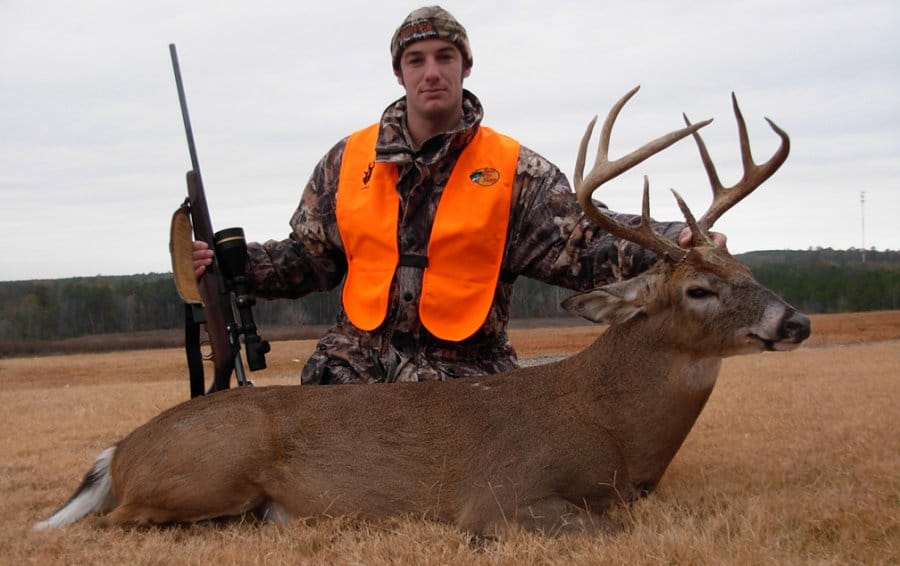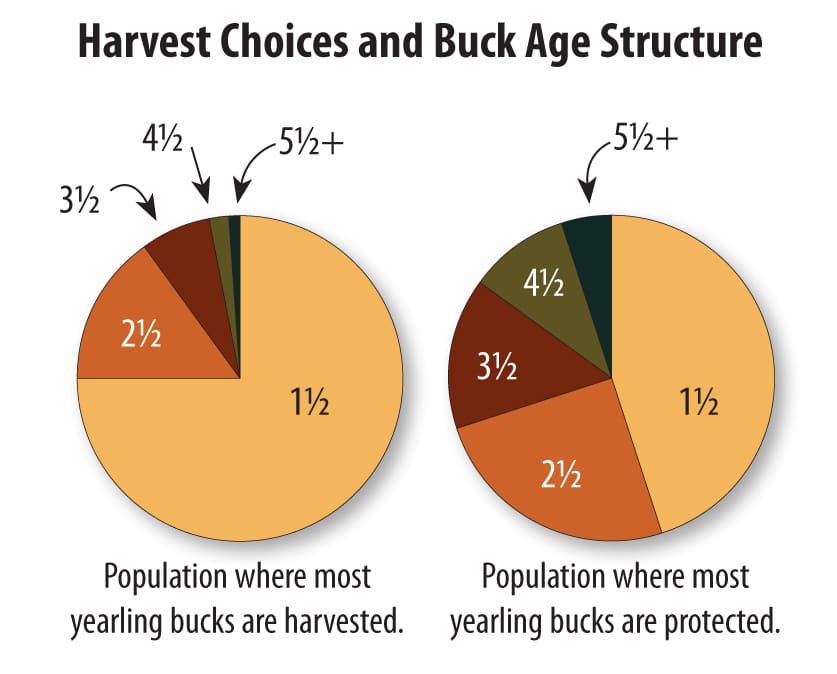
Let’s continue our discussion of harvest prescriptions with another common question: “How many bucks can I harvest?”
The number of bucks you can harvest will depend highly on your level of restraint and the age classes you desire to shoot. If you choose to shoot a lot of yearling bucks (1½ years old), each year the age structure of the herd will be composed of something like 75 percent 1½-year-olds, 15 percent 2½-year-olds, 7 percent 3½-year-olds, 2 to 3 percent 4½-year-olds, and 0 to 1 percent 5½-year-old and older bucks (see the pie charts).

Again, trail-camera surveys are a great technique for estimating the number and age classes of bucks on a property. You can then select the age classes to harvest and calculate your prescription. This helps you establish realistic expectations for a property and goes a long way toward keeping the program fun and rewarding. If your goal is to shoot 3½-year-old and older bucks, use your trail-camera survey results to estimate the number of available bucks that meet your criteria.
If you don’t have an estimate of bucks by age class, use a ballpark estimate based on property size and habitat quality. I must stress this is only a ballpark estimate, and it can range widely based on habitat quality and location. In general, you can produce about three to four 3½-year-old and older bucks for every 500 acres of high-quality habitat. I have helped manage lands where this number of bucks was difficult to reach and others with twice that harvest rate.
Doubtful about your initial prescription? Don’t worry, your year-one prescription is merely a starting point that you can fine tune in future years.
Be sure to read the other parts of this series: